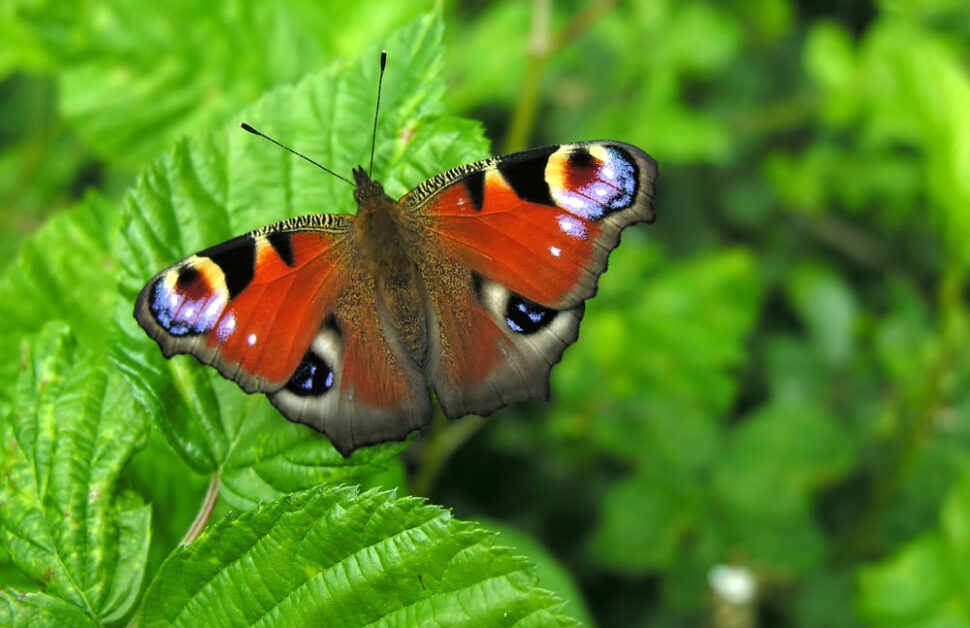
The emerald flash of a green woodpecker, the soft fluttering of a painted lady butterfly, the darting of feeding bats at dusk: the rewards of encouraging wildlife into your garden are many, delightful and often unexpected. I shall never forget the faint rustle through the long grass as I turned the first sods of earth for my new potato patch and parting the fronds to see what looked like a miniature stegosaurus, stalking through the damp greenery, followed by the pleasurable realisation that my garden was playing host to the increasingly rare Great Crested Newt.
Britain’s back gardens are an important wildlife habitat, and, as farming becomes more intense and open countryside comes under pressure from home development, their importance increases. Naturalist, author and vice-president of the Somerset Wildlife Trust, Stephen Moss, says that ‘square metre for square metre Britain’s gardens boast more biodiversity than any other habitat on the planet.’
So, here are a few of the best and the easiest things you can do when introducing wildlife into your garden.
Install natural habitats without letting your garden grow wild
You don’t need to surrender your garden to brambles and nettles to attract the insects that birds, bats, amphibians and reptiles feed on – although a small patch of nettles and dead wood does help. Nettles support more than 40 different species of insect including the Peacock butterfly larva and larva of the Burnished Brass moth, and provide winter shelter for aphids that support our native birds including many varieties of tit. Dead wood piles provide food for invertebrates as well as shelter for larger animals such as slow worms and newts. A boundary hedge of hawthorn, wild rose, blackthorn and crab apple will provide much-needed winter food supplies and shelter for small birds and solitary bee species, rather than an unforgiving line of barren fencing panels.
Gardening for wildlife: https://www.rhs.org.uk/advice/wildlife-garden
A pond is better than a bird bath
Although a bird bath is helpful to birds which need them to keep their feathers in good condition, and to drink from during dry periods, a small pond will really encourage amphibians such as frogs and newts. The pond does not need to be large, but avoid too many overhanging trees and shrubs. The pond should have areas of aquatic vegetation for food and shelter but also areas of clear open water where for example male great crested newts can display their fine markings. Newts avoid ponds with fish in, but it doesn’t matter if the pond occasionally dries out.
For more bird information, visit rspb.org.uk
Don’t forget nocturnal species
Planting night-flowering species will attract moths and bats into your garden, as well as providing heavenly evening scents as you sit and quietly wait for the twilight display. Bats consume an enormous amount of insects – even the tiny pipistrelle needs to consume 3,000 insects on one night alone. Nicotiana (tobacco plant) and evening primroses are ideal for moths, whose long tongues can reach into the long florets. My favourite of this kind of flower are the summer-flowering honeysuckle that hit you with their heady perfume as the sun goes down. Bats however prefer to eat flies which need flowers with short florets such as daisies and poppies. Pale flowers show up best at dusk as insects can find them more easily.
Keep it natural and native
Most of all, make sure your garden is host to a wide variety of native species, of flowers, shrubs, trees and vegetables which can provide insect food and habitat all year long. Garden organically, avoid using pesticides and start a compost heap. Not only does a compost heap provide food and shelter for species such as hedgehogs, bumblebees and the harmless bright green grass snake but it will provide nutritious mulch for your vegetable patch, as well as reduce the need to chuck away food scraps into your landfill waste bin.

Nice article, Sarah.
I agree that the key lies in your idea of encouraging “a wide variety” of native species, as the basis of a food chain (and habitats) for native fauna.
Biodiversity win.
My garden is very plain I don’t have any plants as I’m not very good at looking after them so is there anyway I can still attract wildlife in although there will only be grass, also I have a cat and get a little worried that she will try catching the insects. I have already put a feeder up with nuts in but was told it was to early should I remove it ?